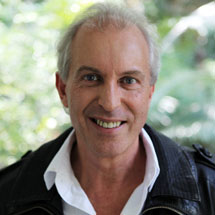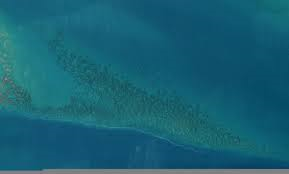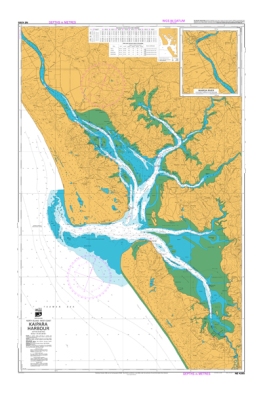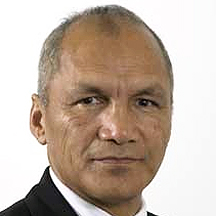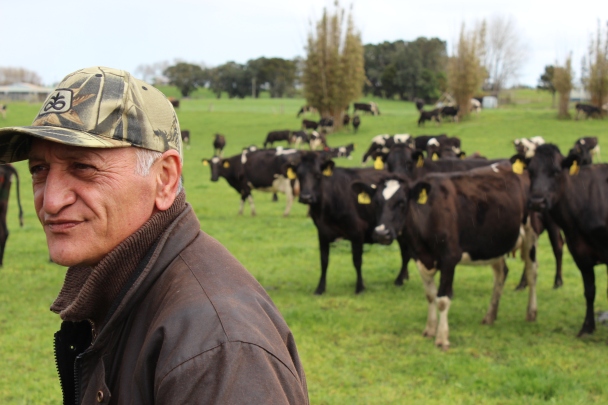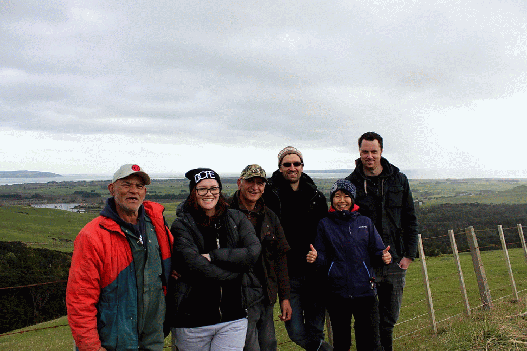In initiating this discussion on fisheries in the Kaipara Harbour we had hoped for some feedback which may have given some insight into how people around the harbour relate to fishing, and their general feelings toward how fishing is and has been governed and managed in the harbour. Unfortunately, to date there has been no feedback. Despite this we will continue the discussion based on existing information and look forward to contributions as the discussion progresses.
Following our outline the next section to this discussion addresses problems facing fishing in the harbour. There are some preliminary points to make. Firstly, for the purpose of this forum, we make the presumption that there is a desire among the communities of the Kaipara Harbour that a commercial fishing industry, in some form, be sustained within the harbour. We take this position from earlier work published in December 2003 by the Kaipara Harbour Sustainable Fisheries Management Group (KHSFMG) Fishing for the Future. The title itself speaks explicitly to the future and the overall goal and purpose of their work has been “[t]o ensure the sustainable utilisation of the fisheries of the Kaipara Harbour so that this resource meets the economic, social and cultural needs of existing and future generations” (2003; 19). Furthermore, the membership of that forum was made up of both recreational and commercial fishermen and women (2003; 14-17) indicating a level of agreement between those sectors, rather than opposition.
A second point that needs some clarification for this forum is the distinction between commercial fishing, recreational fishing, and customary catch allocation. When the overall wellbeing of the Kaipara Harbour fisheries is under discussion this distinction cannot always be clearly defined. Indeed, some members of the KHSFMG forum are described as having interests in both recreational and commercial sectors. Some of the problems facing the commercial sector have implications on the recreational and customary sectors. Governance and management strategies are then negligent to focus on one at the exclusion of the other sectors. This forum will be addressing fishing overall; that is, all sectors. When we discuss environmental issues for example, this approach is relatively straight forward; environmental issues impact all sectors. However, in terms of governance and management, the discussion can be expected to become more complex. Having said that, and keeping in mind a fully integrated approach, the task of this forum is to negotiate those complexities.
To begin with and at risk of repetition, we will recap on issues already identified through earlier work, drawing from the Integrated Kaipara Harbour Management Group’s (IKHMG) Gaps Analysis (2010) and KHSFMG’s Fishing for the Future (2003). Both groups identify commercial fishing itself as an historic contributor to the problems faced now by Kaipara Harbour fisheries. Commercial fishing overtime results in demographic changes (changes in the makeup of the population), amongst target and non-target species, possibly over a relatively short period of time. There is no data available for the Kaipara Harbour, but based on models from other areas there is no reason to think that the Kaipara fishery enjoys any exception to these models (Makey 2017, 288). Records show that the population of West Coast North Island snapper, Quota Management Area (QMA) SNA8, has decreased in average age and size over twenty years and most recent figures (2003 – 4) indicate “… no evidence of population recovery…” (ibid).
In New Zealand and elsewhere commercial fishing has historically enjoyed varying degrees of self-management. To their credit, in recent years commercial fishers have taken the initiative to voluntarily reduce their catch in some QMAs around New Zealand where governance has been slow to respond to anecdotal evidence of dwindling stocks (Peart: 67-8). However, such voluntary acts of conservation have not always been the norm. Commercial fishers have been slow to respond to environmental damage despite declining catches. This is, in part at least, as a consequence of their methods, (Peart: 70-92).
In the Kaipara Harbour commercial fishers have also been negligent. Historically, the harbour fisheries were perceived by early European settlers as abundant. Commercial operations were exploiting the resource as early as 1882 but it was not long before depleted stocks became evident. During 1913 twenty boats were fishing the harbour and by “… 1928 one hundred fishermen were reported as being employed on the harbour”. Japanese commercial trawling began on the West Coast off the mouth to Kaipara Harbour during the 1950s, soon followed by New Zealand trawlers and later pair trawlers. West Coast snapper stocks were depleted over twenty to thirty years, having a negative impact on inner harbour stocks. Improved technologies and methods of the inner harbour launch based fisheries also led to improved (higher) catches. In more recent years a failure by commercial fishers to reach agreement over practice and management amongst themselves and with governance, has exacerbated problems facing the Kaipara Harbour fisheries (The Kaipara Harbour Sustainable Fisheries Management Study Group 2003, 6) Commercial fishing has to a large degree then been the architects of their own demise elsewhere and on the Kaipara Harbour. Furthermore, the KHSFMG have explicitly defined four problematic points of reference facing the fishery. All four are seen as a result of “… increased commercial fishing effort applied to the flounder (FLA), grey mullet (GMU) and rig (SPO) fisheries …” (KHSFMG 2003; 10).
- “ … combination of increasing part-time fishers
- the ability to work many areas of the Kaipara in various weather conditions
- trawling and long-lining operating along and adjacent to the Kaipara entrance
- and changing fishing rules …”
These are seen as cumulative problems facing the fishery and are themselves the legacy of commercial fishing practice.
Historically then, self-management or variations of it appear problematic. However, Peart identifies self-management as the fourth key element for the establishment of the QMS; the establishment of joint entities of quota holders to oversee the governance of the fishery, designed “to enable effective collective action” (Peart 2017, 21). Makey, on behalf of the Integrated Kaipara Harbour Management Group (IKHMG), cites a lack of local management and a lack of kaitiakitanga (local iwi stewardship) as an ongoing issue facing the fisheries and communities of the Kaipara Harbour (Makey 2017, 292-3). But these two models of self-management, on the one hand motivated by commercial interest and on the other founded on community values, would seem in opposition to each other. What would an ongoing and effective model of management over commercial fishing in the Kaipara Harbour look like? Can commercial interest and community values be conciliated?
Makey identifies three potentially conflicting- “categories of relationship” that require consideration when management decisions over commercial fishing in the Kaipara Harbour are under scrutiny:
- Competition within the fishing industry
- Relationships between fisheries and other coastal users, such as aquaculture, sand mining, energy and coastal development
- Relationships between fisheries and charismatic mega–fauna (e.g. dolphins, orca, seals) (Makey 2017, 292)
These three relational categories exemplify locally identified points of reference to serve decision making protocol. They are not considered under the current management regime.
Current fisheries management under the QMS does not take into consideration “… environmental, economic, cultural and social impacts of resource use …” (Makey 2017, 293). Scholars have recognised the socio-economic and environmental benefits of local management of inshore fisheries,(Peart 2017, 108-112; Pinkerton 2015). And as a further example of the value of local knowledge it is locally recognised that “[t]he level … and scale … at which quota was set meant that these catch restrictions have never served as an effective constraint on fishing pressure for the main target species … in the Kaipara” (KHSFMG 2003; 6). However this knowledge has been ignored at government level.
Locally it is well understood that it is inappropriate that the Kaipara Harbour, an inshore estuarine harbour be included in oceanic QMAs. This is an example where decision making from central government has been founded on expedience rather than scientific rational or indeed local knowledge. Delineating QMAs was undertaken with “a rudimentary knowledge of species distribution” and a need for departmental expedience. As a result QMA delineation does not correlate with the “geographical range of [the] biological stock” (Peart 2017, 25-6).
In 2003 the KHSFMG argued for “…collective stakeholder management, underpinned through the statutory powers of the Minister and the Fisheries Act …” (2003; 13). Who the stakeholders are at this point, remains unclear but it is recognised that the powers of central government are engaged.
In November 2016 a workshop was held where a model for future fisheries management was discussed which included “co-governance” over the Kaipara Harbour. Here it was also recognised that “… there will be a need for statutory underpinning of what we do” (Integrated Kaipara Harbour Management Group – Fisheries sub-komiti 2016). But the point is that there has been considerable thought into some form of local self-management of fisheries in the Kaipara Harbour.
Going back to our question, can commercial interests and community values be conciliated, we have investigated institutional arrangements for common property that equally considers noneconomic values. For example, Bresnihan (Bresnihan 2016) likens fisheries to common ground and introduces ideas about commons management or “commoning”. Under his model the introduction of commodity market logic to fisheries management under quota management schemes is comparable and related to the “closure of the commons” or what was in effect the privatisation of community land. While the privatisation of the New Zealand fisheries appears to be complete under the QMS, some of Bresnihan’s ideas about “commoning” are relevant in terms of local management. Under similar circumstances to the Kaipara Harbour, in Bresnihan’s site of research, a small fishing village on the western Irish coast, local knowledge of generations of inshore fisherman has been ignored by the regulatory institutions. This local knowledge in practice defines commoning. In this sense Bresnihan conceptualises the commons not so much as a spatial environment but as practices and knowledge systems that interact fully within it. “It is not a ‘thing’ but the mesh of humans, animals, plants, land, technologies, and knowledge that enables the making and sharing of ‘things’” (Bresnihan 2016, 128). The commons is then a way of doing things and is not simply human focused. It is “more than human” and the commons necessitates “commoning”.
While it sounds somewhat academic and to some, even idealistic, this approach has merit. Perhaps one of its strongest points is the requirement of community participation and the potential to put management of the local industry into the hands of the community at an integrated level; that is, where management is overseen from the catch to the end user. Raewyn Peart documents anecdotal evidence of the Kaipara fisheries before the introduction of the QMS that reflects some of these characteristics.
“… it was mainly locally based fishers [who] knew the harbour intimately … There was a culture of looking after the fishery and after each other …We would discuss what areas could be worked and which areas needed a rest.” (Peart 2017, 57)
A key critique of QMS arrangements is that, in one form or another, QMS’s has had a negative impact on locally based inshore fisheries throughout the world. Drawing from her research on the salmon and halibut fisheries of British Columbia, Canada, Evelyn Pinkerton (Pinkerton 2015) examines “traditional moral practices and understandings” and how these have been eroded under neo-liberal management where emphasis is on “efficiency and capital accumulation”. She proposes the introduction of a ‘moral economy’ into the management regime. Her model counters the “bio-economic” foundation of the rationalising process and draws parallels with the concept of ‘commoning’ in the sense of how things are done for overall “well-being”. “The term has been applied to almost any economic policy which recognises that moral values matter in achieving the socio-economic goals of any society …” (Pinkerton 2015, 411).
Pinkerton identifies three elements necessary to achieving a morally founded management regime; local access and tenure to local fishing grounds; equal economic opportunity to differently sized and equipped boats, and for limitation on corporate ownership of license and boats. She also argues in favour of the share system which divides some of the catch amongst the crew. Regarded as the antithesis to economic efficiency, the share system has come under attack by “neoliberal economists”, but Pinkerton maintains that the share system facilitates place and occupational identity and describes it as “[o]ne of the most widespread manifestations of a moral economy …” (Pinkerton 2015, 412).
Both commoning and a moral economy are only two examples of alternative systems of management that begin to reflect an overall principle of social justice. Social justice is a complex area of thought that is possibly best understood as “… a society that truly values human worth and dignity” (Reisch 2002, 349). But what would a commercial fishing management regime look like founded on the principles of social justice or more specifically, principles of equality, justice and self-determination? It would firstly require an ethic of care as an input[1] measure into fisheries management (personal communication Leane Makey) and it would be required to go beyond being human-centric to consider nature relations. Indeed there would be times when humanity would be required to take second place; when, for example, the integrity of the harbour would take priority over the wants of humanity. It is hoped that these are the sort of questions that can be addressed through this forum.
To gain some insight into what it means to bring social justice into fisheries management it may help to look at some of the social injustices facilitated under the current regime. There is a considerable amount of recent literature to draw from. For example Fiona McCormack’s comparative critique of New Zealand, Icelandic, and Irish fisheries explains how they have all been affected by the introduction of some configuration of QMS. The level of privatisation and the subsequent ability to trade quota differs between them, but the outcomes are very similar; the loss of fisheries affecting mostly small, local fishers and coastal, rural communities. Furthermore, in the three cases the introduction of QMSs has required heavy handed political intervention and has at the same time been highly contentious and contested (McCormack 2016).
Next Stage:
Part 3 of our fisheries blog will look more closely at the status of Kaipara nature – defined as Kaipara ecosystems, such as status of shellfish stocks, seagrass habitat and invasive species. Part 4 will consider the state of other inshore fisheries in the upper North Island like the Manukau, Hokianga and Tauranga. Any comments on such harbours please let us know.
References cited
Bresnihan, Patrick. “The More-Than-Human Commons: From Commons to Commoning.” In Transforming the Fisheries: Neoliberalism, Nature, and the Commons. Nebraska: University of Nebraska Press, 2016.
Integrated Kaipara Harbour Management Group – Fisheries sub-komiti. “Synopsis of Workshop Held Friday 25th November 2016 at Wellsford Library “: IKHMG, 2016.
Makey, Leane. 2010. Restoring Sustainable Use of Fish & Invertebrate Stocks. In, IKHMG, http://www.kaiparaharbour.net.nz/Content/Publications/Chapter10RestoringSustainableUseofFishFinal.pdf 19-09-2017. (accessed September, 2017).
McCormack, Fiona. “Quota Systems: Repositioning Value in New Zealand, Icelandic and Irish Fisheries.” In Anthropologies of Value: Cultures of Accumulation across the Global North and South, edited by Luis Fernando Angosto-Ferrandez and Geir Henning Presterudstuen, 175 – 97: Pluto Books, 2016.
Peart, Raewyn. Voices from the Sea: Experiencing New Zealand’s Fisheries Management System: Unpublished draft copy, 2017.
Pinkerton, Evelyn. “The Role of Moral Economy in Two British Columbia Fisheries: Confronting Neoliberal Policies.” Marine Policy 61 (2015): 410-19.
Reisch, MIchael. “Defining Social Justice in a Socially Unjust World.” Families in Society: The Journal of Contemporary Human Services 83, no. 4 (2002): 343-54.
The Kaipara Harbour Sustainable Fisheries Management Group, (KHSFMG). “Fishing for the Future: A Strategy for the Fisheries of the Kaipara Harbour “, 2003.
[1] Fisheries management commonly includes both input and outpueasures. QMS systems are predominatly output systems and lack input measures or controls such as size limits, spatial restrictions and closures.

